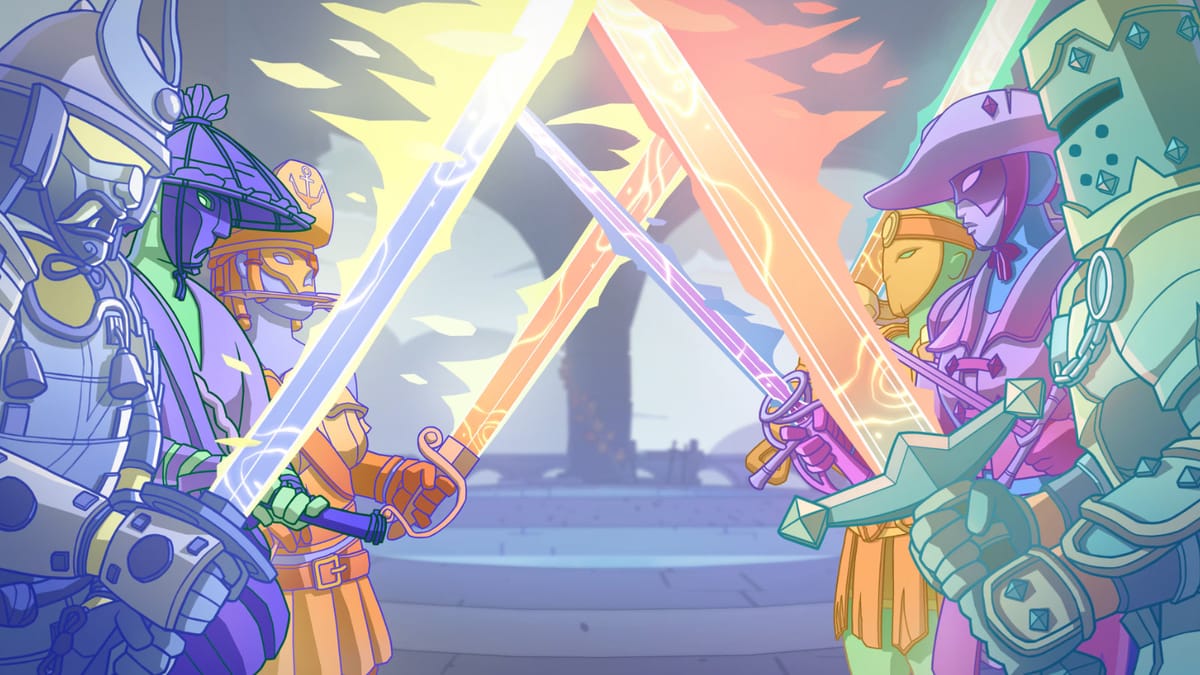
It must have been around 1996 when I first encountered VR. It was a massive machine in a mall kiosk offering two experiences – flying around on the back of a pterodactyl while shooting other flying creatures, and sword fighting. The first made me sick as a dog, but the sword fighting stuck with me to this day. One day, we’d be able to play a VR fighting game against our friends in VR that’d capture the essence of sword fighting. We’ve had a few attempts leading to this point, but that day has finally arrived. Broken Edge has paid off a promise made more than 25 years ago…
Broken Edge is a virtual reality, primarily-multiplayer, sword fighting game. You’ll note that I didn’t state what type of sword fighting, and that’s because the answer would be “all of the major ones”. Before you try to duel as a Samurai, Duelist, Knight, Rōnin, Pirate, Viking, Persian, Barbarian, or Tyrant, you’ll need some training. Off to the dojo.
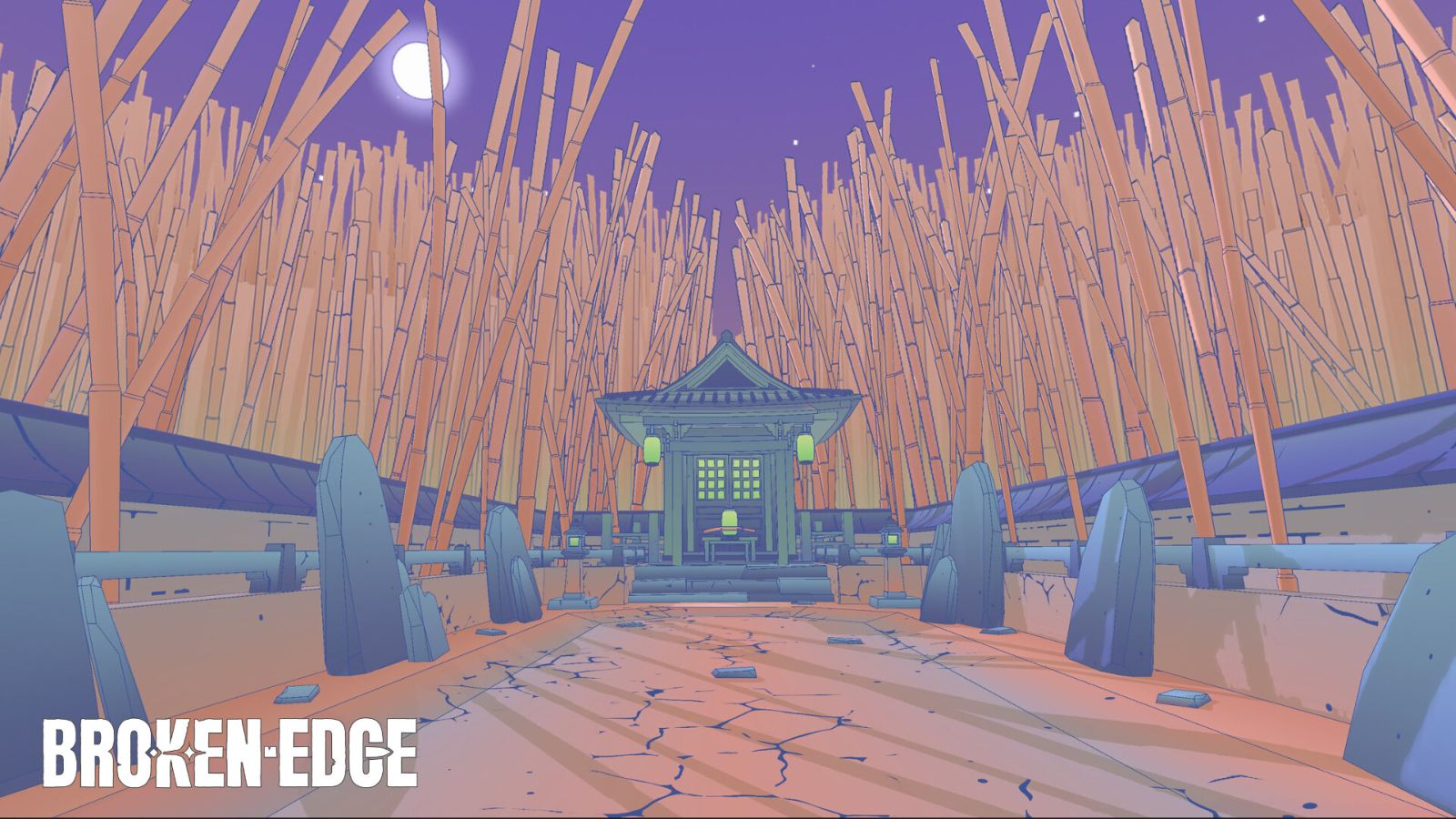
Sword fighting as a martial art is as complex as it is deadly. Duels aren’t like the Errol Flynn movies where the swashbuckling pirate swings over the table on a chandelier, engaging in protracted sword-on-sword clashes. Instead, they are more like Akira Kurosawa’s films as two men face off against each other, with one of them meeting a swift and bloody end moments later. Only one other game has managed to come close to this (Hellish Quart), but there’s something special about doing it from a first person perspective that hasn’t be captured anywhere else.
Dojo training starts off with basics – learning how to swing the sword, quick reminders on the lethality of sword combat, and the central energy gauge mechanic. Rather than just focusing on that single strike finish, Broken Edge introduces the ability to break the opponent’s blade. In fact it’s your key to victory, so learn the lesson well.
No matter which style you pick, each fighter has a gauge for their blade. In fact, with some exceptions, you’ll need to break your opponent’s defenses to kill them. The way you break that defense is by charging your blade and then breaking their sword. For that, you’ll need to charge that gauge, and thus the next lesson.
Charging your blade is different for every sword style. The samurai charges their blade by quickly striking a stance, whereas the Persian charges their paired scimitars by keeping them whirling. Each warrior has their own method, but all of them result in the blade or blades erupting in magical fire. Striking your opponent’s sword with your sword makes your weapon take damage in equal measure. Charging it up however will cause significant damage to the enemy’s weapon while protecting yours. More important than that, however, is a touch of precision.
When you engage an opponent and strike their weapon, wherever that impact occurs is where the damage will occur. Catching your opponent’s blade closer to the hilt leaves them with a shorter weapon to re-engage for the next round. Naturally, that means engaging well within the kill zone, so you’ll have to be mindful of your timing lest you meet a quick and ignominious end.
In addition to charging your blade, you also have a single-use special attack that will obliterate your opponent’s defenses. Just be aware, they have that same power, so finding the right time to use it can be a challenge. Once again, all styles have their own method of “awakening” their blade. The samurai strikes a jōdan-no-kamae stance (sword above the head, tip facing rearward and up, ready to strike), and their blade ignites a massive flame. Striking with this attack will go through any defense, including the Knight’s shield, and any touch to the body or head is almost assuredly lethal. The Knight charges theirs by banging their sword against their shield, the Barbarian holds their massive zweihänder in both hands, slowly looping it around their body in a sideways infinity motion.
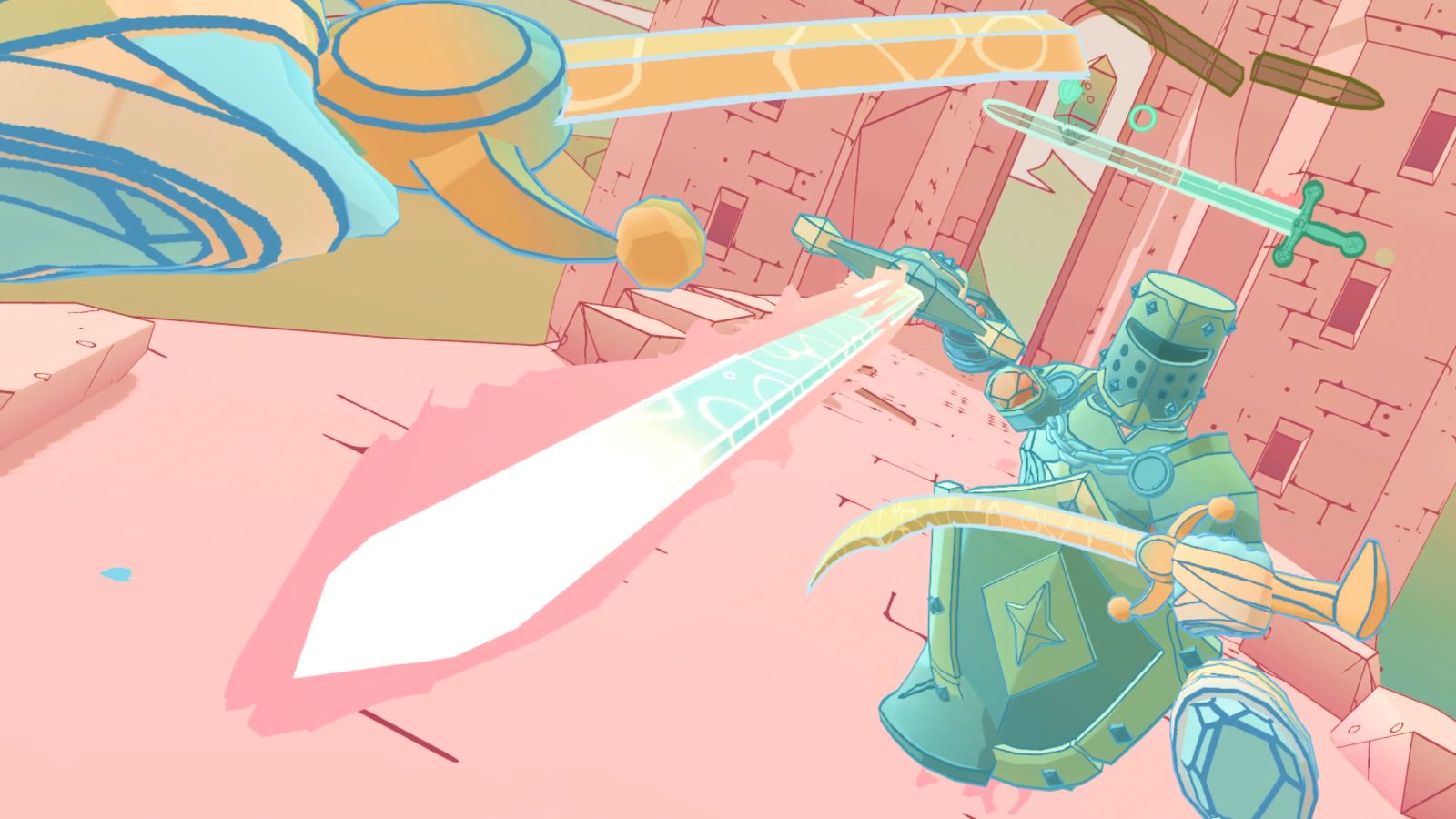
A second special move called Ward will give you a bit of defense against the ever present specter of death. Once again, these are different for each character class. For example, the Persian brings up their Ward by raising their blades above their head, edges upwards. You’ll break that stance with the swords parallel to your shoulders, blade side still facing upwards. As you do this, you’ll see a shape appear on the screen, letting you know you are doing it correctly. Your Ward can only be broken with an Awakened attack, making it worthwhile to learn to hit those stances.
Engaging and breaking your weapon isn’t the end for you. First and foremost, it’s still possible to kill someone with a short stub of a weapon – you are never defeated until you are dead. Still, it’s better if you can reconstruct your blade. Just like the Awakened attack, you also have a way of charging your blades to restore them – a Second Wind. Naturally, the way to activate them is different for each class. The rōnin does so by holding their blade and scabbard with the scabbard vertically, pulling the blade slightly. You then pull the scabbard off, holding it aloft and to the rear, with the sword held low and painting forward. Finally, you’ll cross them under one another, scabbard on top like you’ll see below.
Some of these Wards and Second Winds are far harder to execute on the fly. Little tweaks here and there might help, but some of them are just positioning and practice. That’s one thing in the dojo, but doing it when a Barbarian is swinging the equivalent of a ship’s propeller at your head and you might struggle even more. It’s a minor thing, and likely manifesting because I’m having to sample everything to review the game rather than really focusing hard on one particular style.
Two things should be immediately clear – Broken Edge has a high skill cap as you have a ton to learn, and secondly, when you do finally master them you’ll feel like a total and complete badass. If you’ve ever had any training like Kendo or Iiado you’ll appreciate the hard work that developer Trebuchet Studio has put into the movement and technique. Combined with the excellent tracking on the PSVR2, I immediately fell right into stance and at the end of a 45 minute long session I was sweaty and all I could think about was trying to find a new place to train again in the real world.

Truthfully if there’s anything lacking in this equation it’s the single player experience. It’s essentially practice. There are no powers or special moves to unlock, nor should there be, instead unlocking modes called Legendary at level 10, and Legacy at level 20. Legendary gives you an alternate blade to choose from, often with slightly different attack styles. Often these are faster but lighter, or vice versa. Using the Pirate for example, they get a cutlass that has less reach, but far faster attack speed. With the weapon selected, you can go through the entire range of training for this weapon as well. It provides a bit of variety for your overall experience.
You might look at the pastel colors of Broken Edge and think this is a casual game. It doesn’t have hyper-realistic graphics, the blood is a stylized spray of color, and the whole thing runs towards the softer side of the crayon box. I promise you – this is every bit a combat simulator as the darkest and grittiest of games out there, and with stakes just as high. I’m not sure why the team chose this particular color style, but I can say that it doesn’t detract from the experience. Your focus should be on your opponent’s movements and reactions rather than the color pallet anyway.
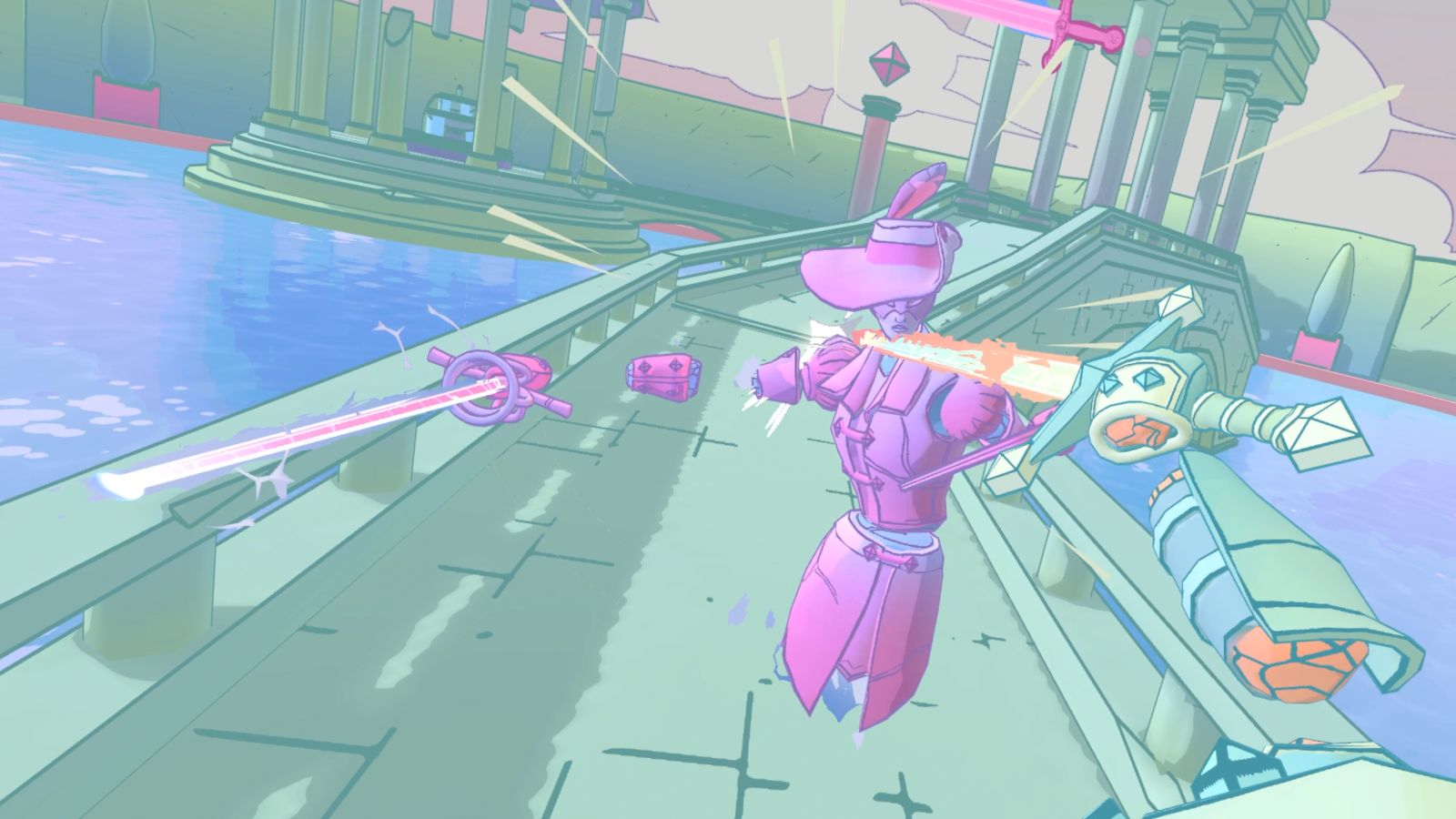
Looking beyond the color you’ll find a great deal of detail in a game that looks simple on the surface. Much of the character design goes into the armor sets each wear, giving all of them an iconic cel-shaded look. There’s a fantastic level of detail in the environments as well. They too are cel-shaded and minimalist, but there are a solid variety of them. A castle with a bridge, some sort of climbing tower with a moat on the side of the bridge upon which you’ll fight, a mountain basin filled with sand, some sort of Roman bridge system with what looks like a gazebo in the distance, and some Arabic ruins in the sand are just a few of them. Much like Rock Band, you’ll be too busy with what you came to do to watch the background.
Broken Edge is an absolutely visceral experience. If you’ve ever held a sword, you know that the weapon is an extension of your body, and that it’s a very intense activity. You might not be punching or kicking, but if done correctly, you’ll likely have a pretty good sweat going by the end. Broken Edge is no different. The game requires a full 6.5 feet of space in all directions – no exceptions. You’ll absolutely use every bit of it as you step, parry, lunge, thrust, and move around your opponents. As such, we’ve declared this a “chaperone-required” game as it would be extraordinarily easy to lunge in and jab your TV into oblivion.
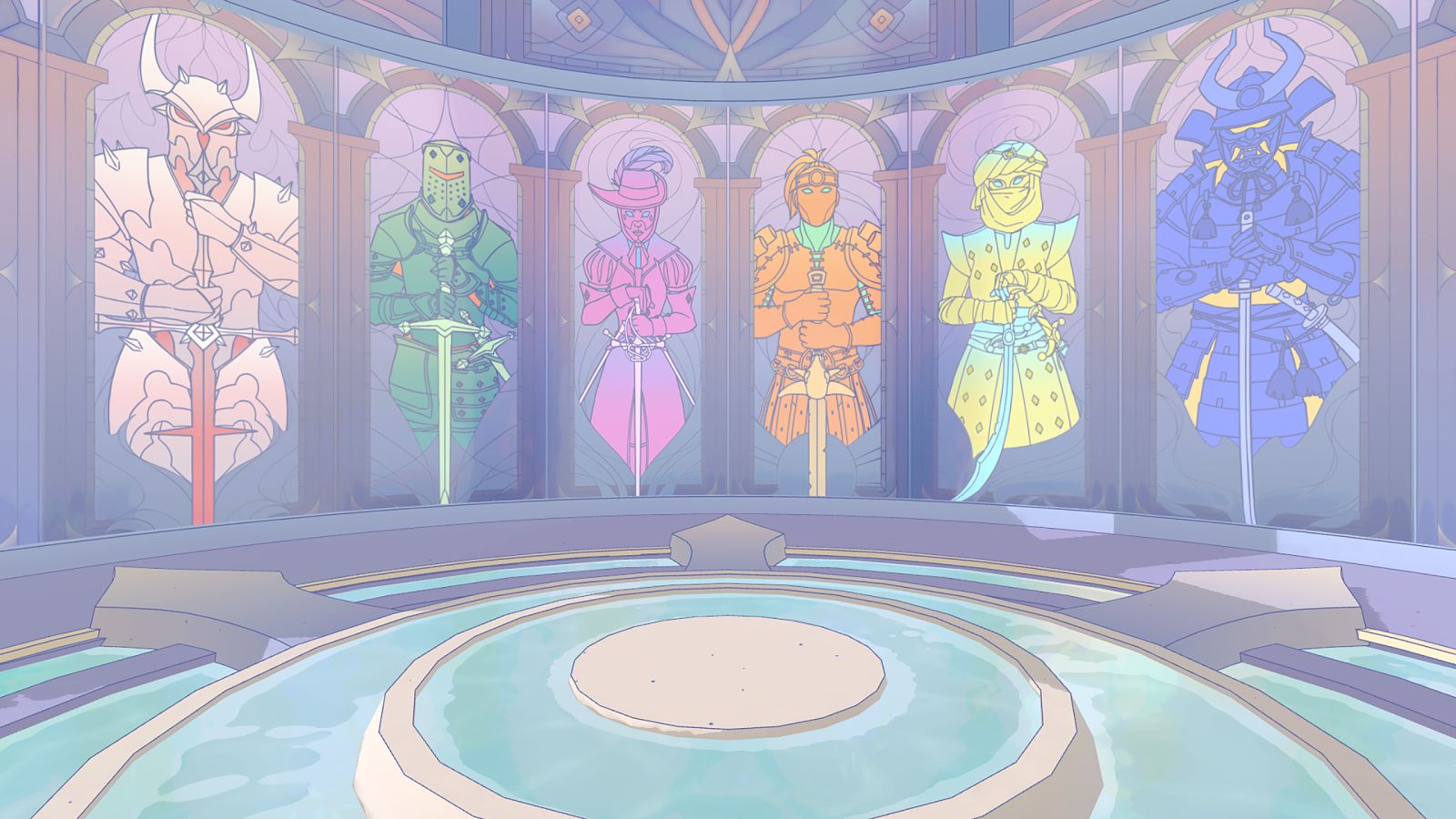
As someone who has suffered from VR sickness in the past, I’m very happy to report that Broken Edge is a nausea free experience. It’s extraordinarily smooth and runs clean on the PlayStation 5. I’m not certain if it’s using foveated rendering (my gut says no), but it doesn’t appear to need it.
As I stated earlier, Broken Edge is primarily multiplayer. Heading online you can battle in casual mode or ranked. The names are pretty explanatory, so I won’t belabor that. Before you join in on multiplayer matchmaking you’ll see which server you’re connected to, in what region, and what the ping is. I don’t see any way to adjust this, so hopefully the automated portion does the trick. At the time of writing and with cross-play enabled there are roughly 45 people online and competing. Like most online games, it’s best played with friends rather than random people, but the experience is effectively the same as the single player campaign, albeit with whatever smarts the other person brought to the table.
I do wish there was a storyline, or some sort of way to help engage solo. Multiplayer games, even ones that support crossplay (Which Broken Edge does for Meta Quest 2, Meta Quest Pro, and all PCVR platforms on Steam) won’t hold my attention long. I enjoy solo experiences, no matter how shallow, to provide a framework. Even Pistol Whip sets up bizarre scenarios to guide me through my thumping good time. It’d be nice to get at least a Soul Edge level of nonsense.
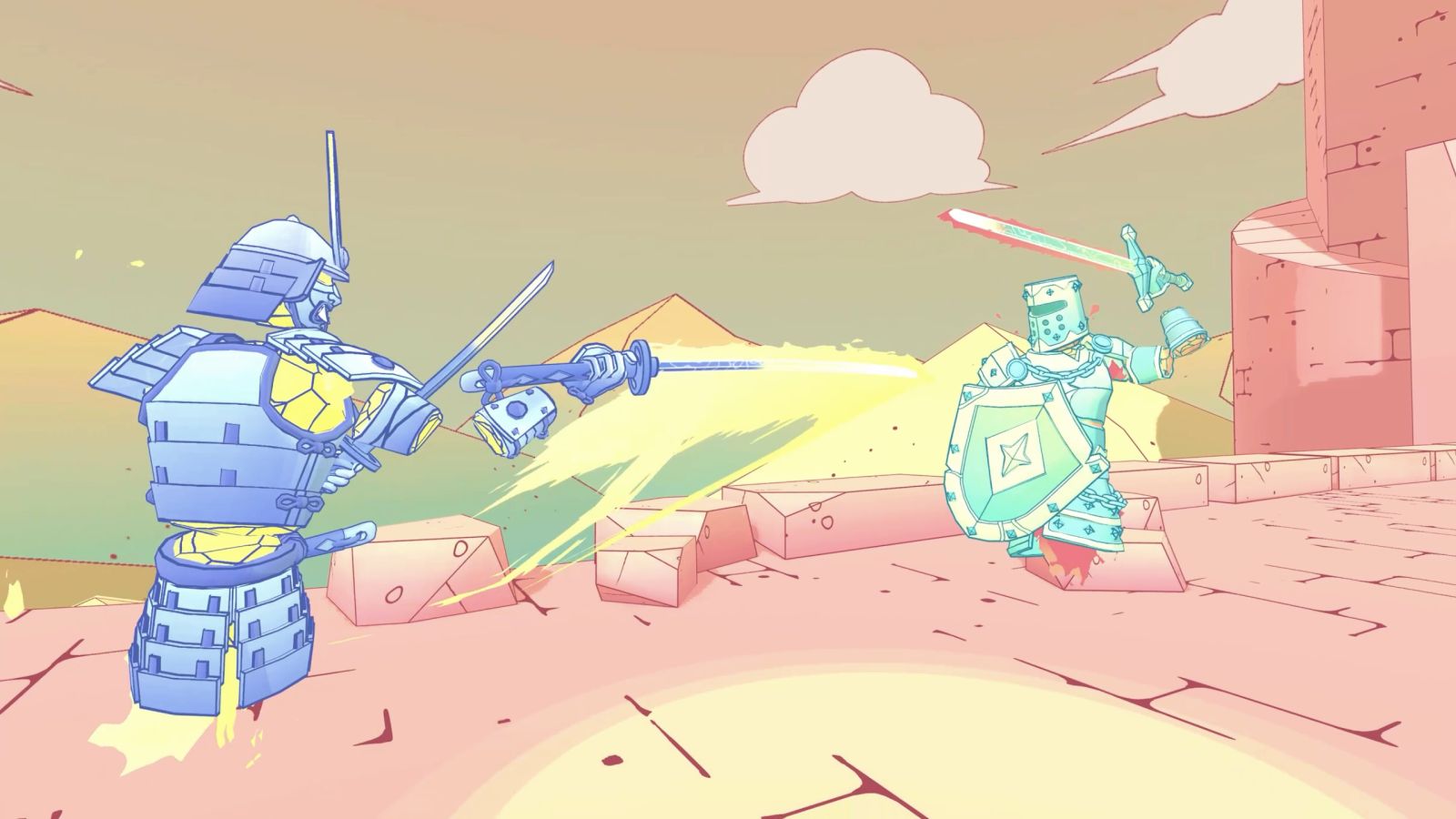
Minor complaints aside, there’s nothing like Broken Edge. At its core, your experience with Broken Edge is directly tied to how much you put into it. Flailing about will get you killed after the first few engagements, but how effective a sword fighter is also directly tied to time spent. Figuring out the timing, answering the question on when you should use your single Awakened attack, or whether to block and counter or rush straight in for a surprise attack. Knowing how to perform special attacks, and how to block, dodge, or counter them. In my martial arts class I’ve always taught that every attack is a question, and it’s up to you to find an appropriate answer, and that applies here as well.
The thing I’m most excited about in Broken Edge is the future. When this game launched on the Quest 2 it had less characters, no Legendary mode, no competition ranking system, and a few less arenas. The team has consistently added new content to the game, as well as fan-requested tuning and improvements. Here’s to hoping that success on Sony’s platform continues to drive new ways to showdown, and fresh new fighters to do it!
Broken Edge
Great
A nuanced and excellent sword fighting game with far more depth than you might see on the surface, Broken Edge delivers martial arts combat, albeit with an almost exclusive online focus.
Pros
- Completely awesome sword fighting experience
- Great looking stylized graphics
- True to their martial arts styles
- Zero nausea experience
- Cross-platform multiplayer
- $15 price point
Cons
- No storyline. Not even a poor one
- Some balance may be needed for parity in Wards/Second Winds
